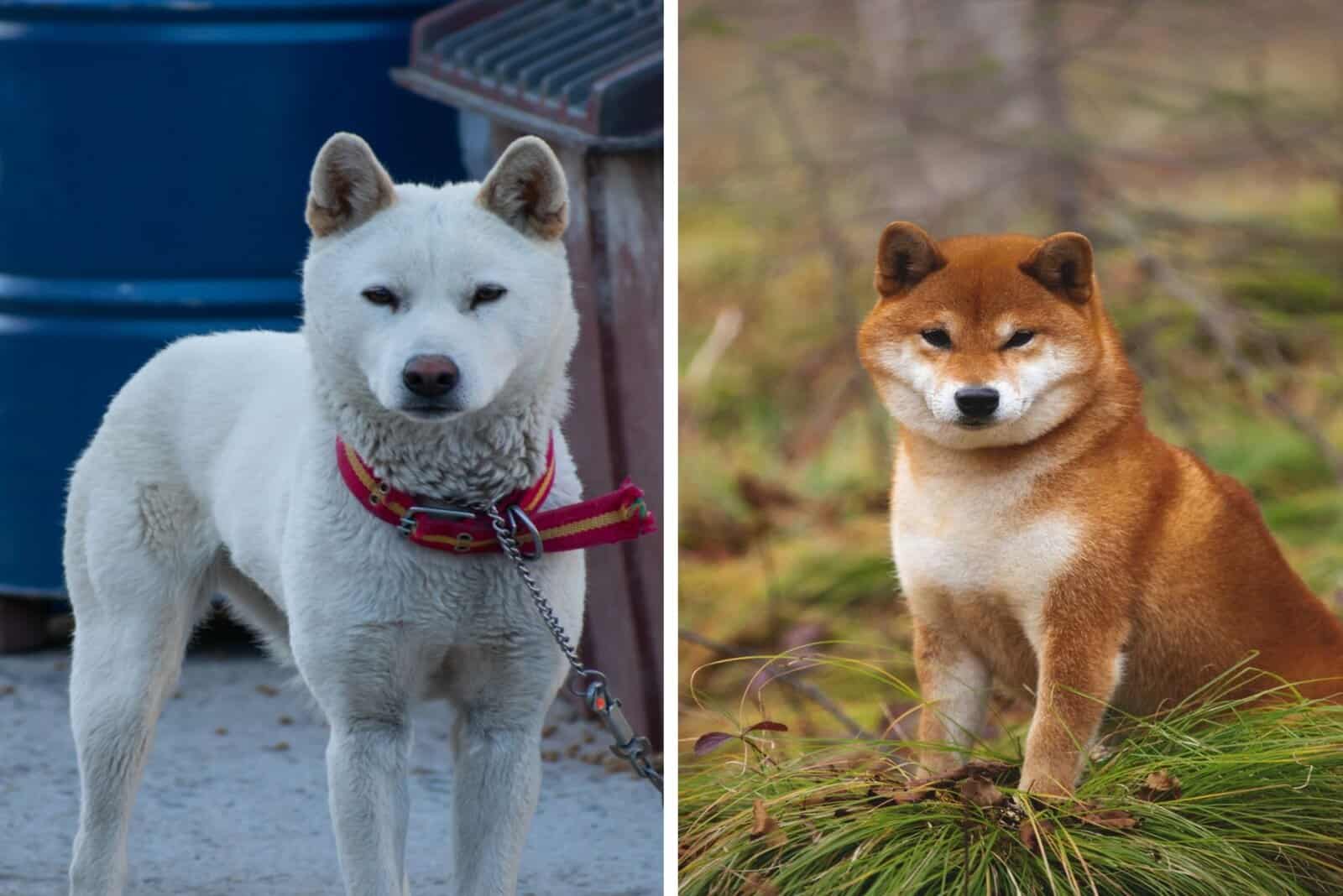Have you ever seen a dog that looks like a Shiba Inu, but something just felt wrong? Well, there’s a reason for that off feeling you had, and it’s simply called: Jindo dog.
The Shiba Inu vs Jindo battle won’t have any winners, but it’ll finally explain the main characteristics of both breeds that connect and set them apart.
The Shiba Inu and the Jindo are both spitz dog breeds that share a significant number of similarities. However, it’s time to check what differences there are between these two dog types, and how to distinguish one from another!
Shiba Inu vs Jindo: Everything About The Shiba Inu
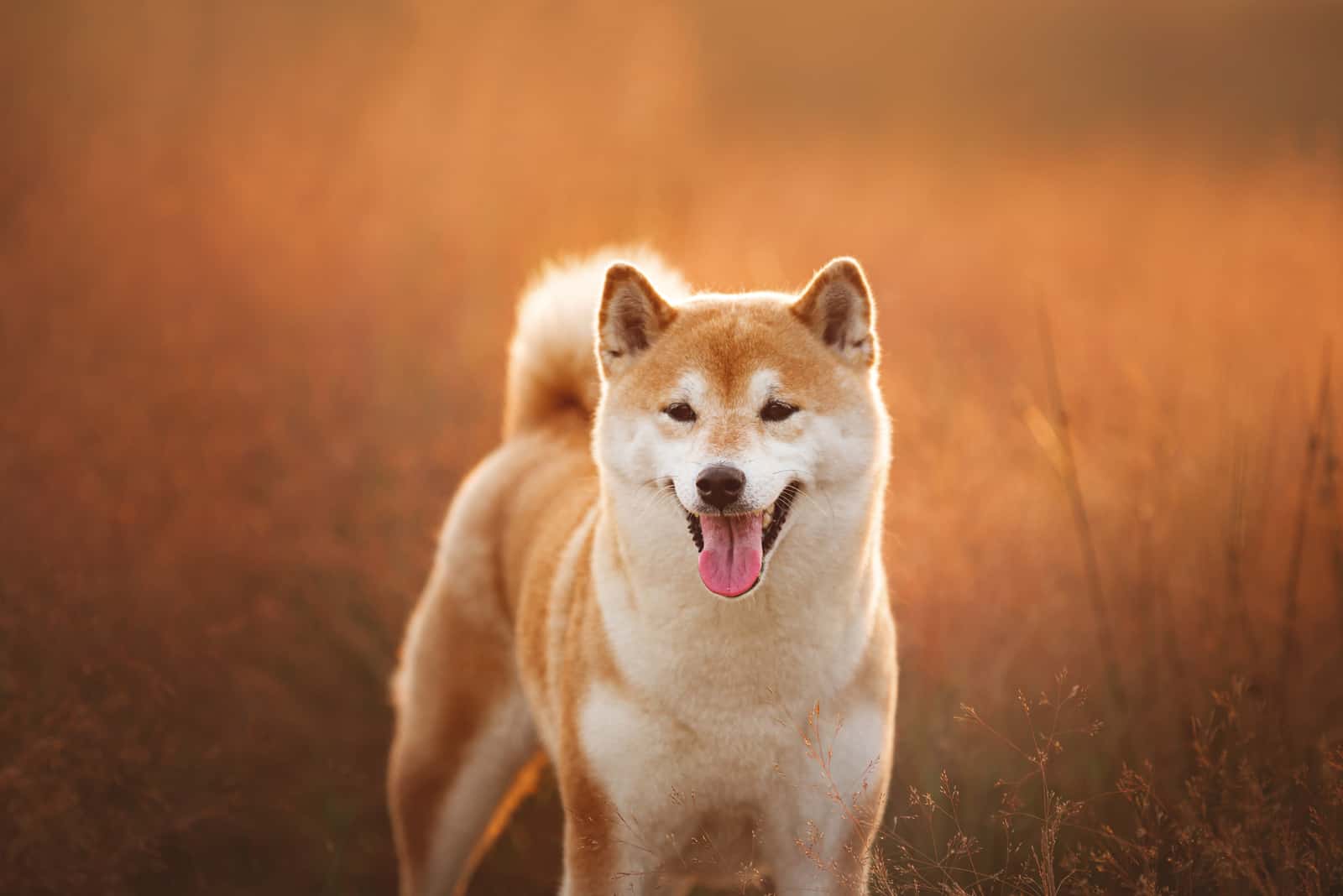
The Shiba Inu dog breed is a hunting canine that is great for catching wild animals of all sizes. It’s also known under the nicknames ‘Bushwood dog’, ‘Japanese small dog’, ‘Shobe’, etc.
Some might say this breed is better at hunting smaller animals, but Shiba canines have proven many times that they’re also capable of tracking bigger catches like wild boars.
The origin of the Shiba Inu
The Shiba is a dog breed of great significance for Japan, which is its country of origin. This canine is a part of six original Japanese dog types, which include:
• Kai Ken
• Akita Ken
• Kishu Inu
• Shikoku Ken
• Hokkaido Inu
• Shiba Inu
All of these dog breeds are considered a part of Japanese culture and tradition. However, the Japanese small dog represents the national treasure of this beautiful country, even though it’s the smallest breed out of the six mentioned above.
This type of dog was used for hunting hundreds of years ago. Unfortunately, the period of WWII brought the Shiba to the verge of extinction.
Fortunately, three different lineages saved this wonderful breed from a complete wipeout.
Popularity
This dog breed has been an essential part of Japanese culture, but it became pretty popular worldwide as time passed.
According to the data from the American Kennel Club’s (AKC) website, the Shiba was the 43rd most famous canine in the United States in 2020.
Temperament
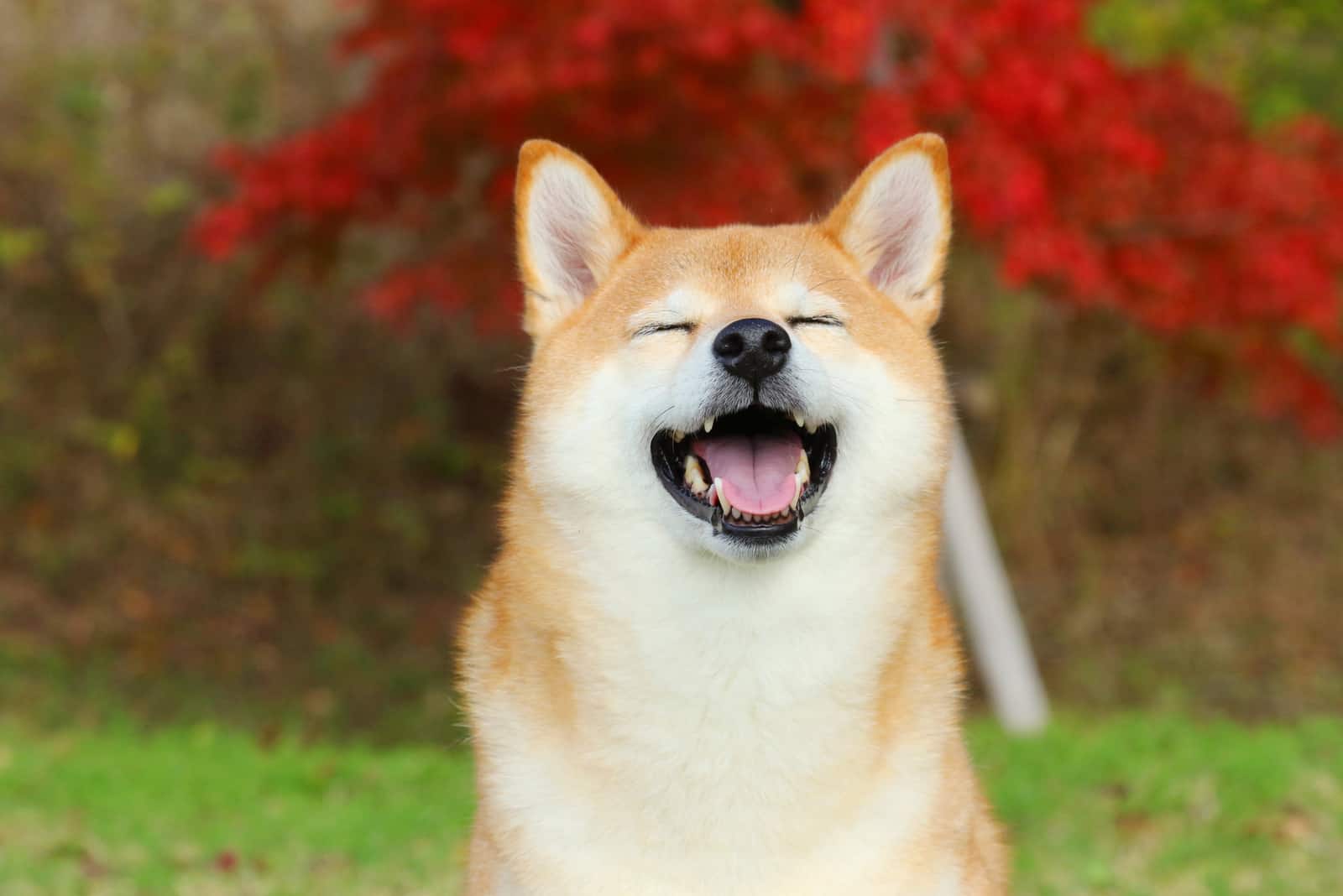
This dog breed has a fascinating personality, and it’s no surprise when someone says they’re “cats” among dog breeds.
They’re loyal, playful, and adorable, but pretty impatient and stubborn as well.
This dog breed is well known for the “Shiba Scream” noises that every canine of this type produces whenever they want to express their anger, worry, boredom, or distaste.
These doggies like to be in control of everything that’s going on around them. However, their dominant side can be put under control with proper practice.
A Shiba pup owner should start obedience training of this type of dog to show who has the authority in the house.
The good news is that these canines adjust easily to every change under proper guidance, including sharing their personal space with other animals or young kids.
Judging by their look, most people think that Bushwood dogs are the perfect choice for their families, especially if they’re first-time owners.
But, if you’re not ready to fully commit and train your pet on a daily basis, it might be better to find a less demanding pet.
Physical traits
The Shiba is a canine with some of the most adorable dog cheeks that can melt the coldest of hearts!
The Bushwood dog and the Jindo are very similar, but there are some physical characteristics that can give away which one is a Shiba and which one’s a Jindo.
The first sign is the ear length. The Shiba Inu breed typically has short ears with pointy tips.
The head has more of a fox-like shape, with sharp facial features, although female Shibas have slightly softer face lines.
These dogs are built like natural hunting dogs when it comes to their bodies, so it’s no surprise that they’re agile, strong, and fast.
The body structure of Shiba Inu puppies is more solid than the one of Jindo pups. This is best seen through the Shiba’s legs and chest, which are incredibly muscular and strong.
Female Shibas have a narrower chest than their male counterparts, which have a bigger chest than hips.
This dog breed is equipped with a double coat as well. The outer coat is relatively coarse, but the undercoat is very soft, offering maximum protection and comfort during harsh winters.
Shibas have a tail that is curled up in order to keep their body warm. The Akita has the same type of tail as the Shiba.
Colors
Shiba Inus come in specific coat colors.
This canine breed is famous for its fox-like coat that is covered with “urajiro” spots on the belly, neck, and cheeks.
Urajiro is a Japanese expression translated as “white under the surface.” This expression represents the white or ivory marks on a dog’s coat.
According to the breed standard, these markings are necessary in order to acknowledge a Shiba.
The orangy-red color is typical for Shiba Inus, but these small dogs can be found in other color combinations as well, such as:
• Sesame – A rare combination of red and black coat hair, with a dark priming coat.
• Black and Tan – This combination isn’t uncommon in the dog world, but it’s pretty interesting for the Shiba. The fur is covered with solid black color and tanned marks, which appear on the belly, legs, muzzle, and even around the eyes.
• Cream – Urajiro is typically in white/creamy color, and it’s pretty visible in combinations with standard Shiba colors. But, sometimes a Shiba can be covered with the same color and markings, so it’s impossible to identify whether a Shiba has urajiro or not. Most breeders avoid this type of Shiba because they’re not acknowledged in dog competitions and shows.
Height and lifespan
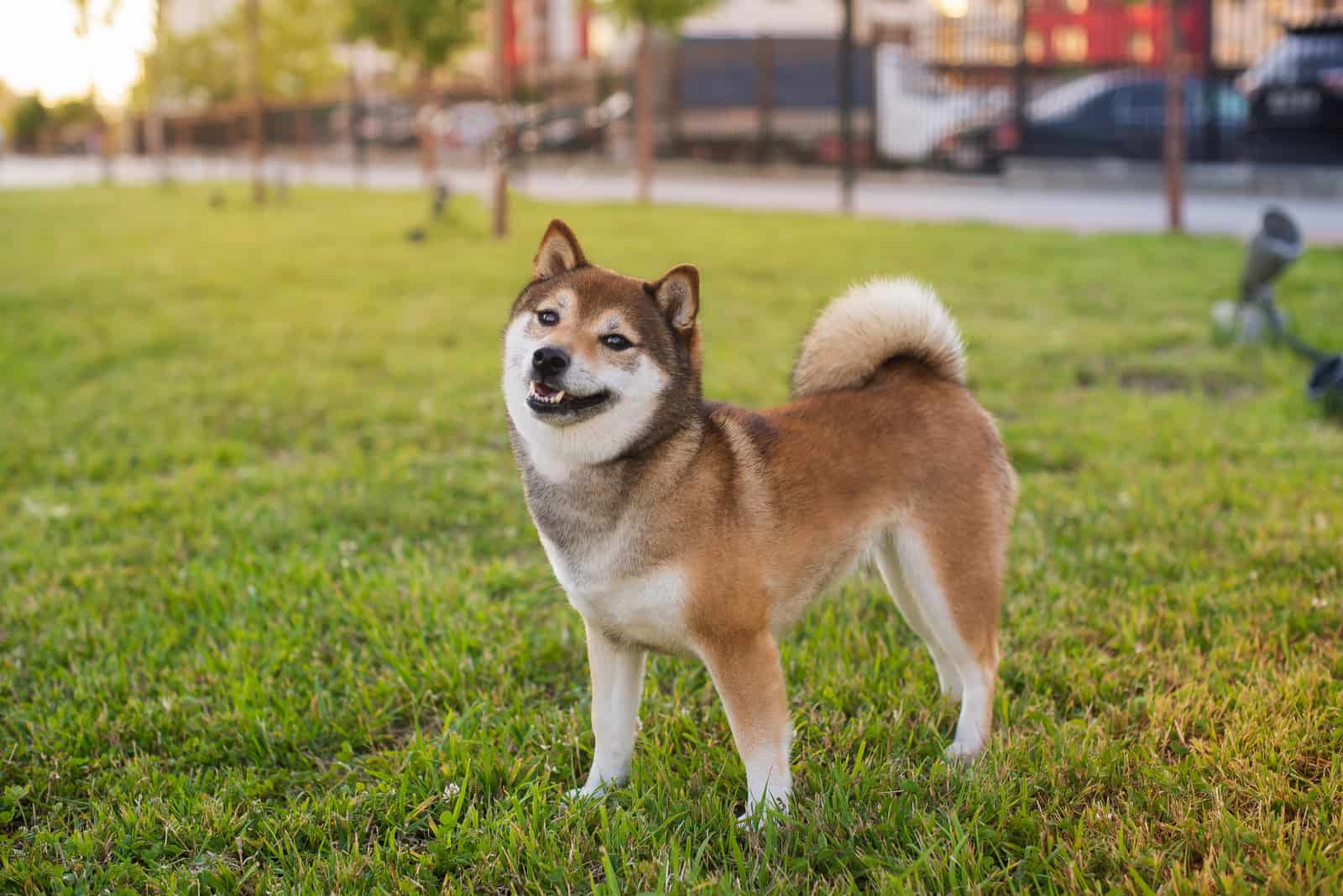
Purebred Shiba Inus are small dogs, which makes them the perfect choice for dog owners who’re looking for shorter pets.
Male Bushwood dogs can grow up to 17 inches (43cm). The maximum weight is 22 lbs.
On the other hand, female Shibas are even shorter, and can go up to 16 inches in height and weigh up to 18 lbs.
The lifespan of a Bushwood dog is anywhere from 12 to 15 years depending on the overall health and the environment.
This breed of dog might not be as giant as a German Shepherd, but it’s still a good hunting and watchdog. In the past, Shibas were considered hunters of small animals.
Therefore, don’t let their size fool you because these dogs can be pretty strong.
Health issues
Like most canines, this type of dog has high risks of certain health conditions that might affect its quality of life and its lifespan.
The most frequent health conditions that Shibas deal with are:
• Hip dysplasia
• Hypothyroidism
• Patellar Luxation
• Atopy (allergy)
• Cataracts
Most canines are lucky enough not to experience any of the above-mentioned health problems.
However, if you notice any symptom of these illnesses, take your dog for a checkup. None of these diseases will significantly impact a dog’s life if they’re discovered in time.
Jindo vs Shiba Inu: Everything About Jindo Dogs
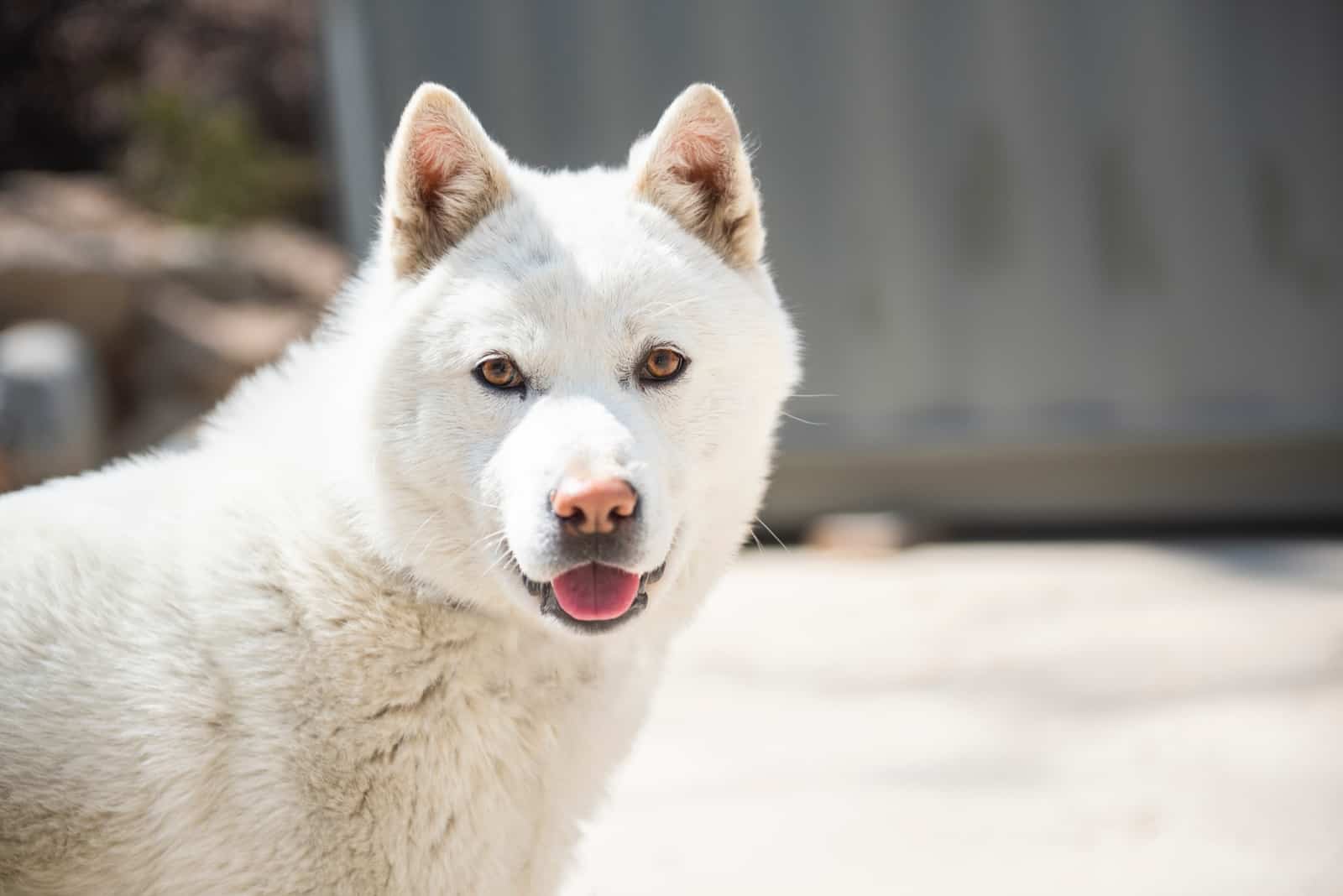
The Korean Jindo Island is the home of a beautiful type of dog named Jindo. This canine became the national symbol of South Korea because of its loyalty and respect for the owner.
This dog breed has rigorous standards when it comes to recognition. The Korean law officials acknowledge only those canines that are born in South Korea.
Still, both the Federation Cynologique Internationale (FCI) and the United Kennel Club (UKC) accept this canine as an official dog breed.
The Origin Of The Jindo Dog
The breed’s name comes from its place of origin, where they have existed for several millennia.
Jindo pups were raised to become guard dogs with a high prey drive, which was very helpful during the hunting season.
The Korean Jindo dogs were bred naturally on the island as they were able to walk around freely instead of being kept as pets.
This dog breed was first introduced to the West in France, and it later appeared in the U.S. and the UK.
In 2016, only two Jindo dogs were located in the United States, which confirms the rarity of the Jindo outside Korea.
Temperament
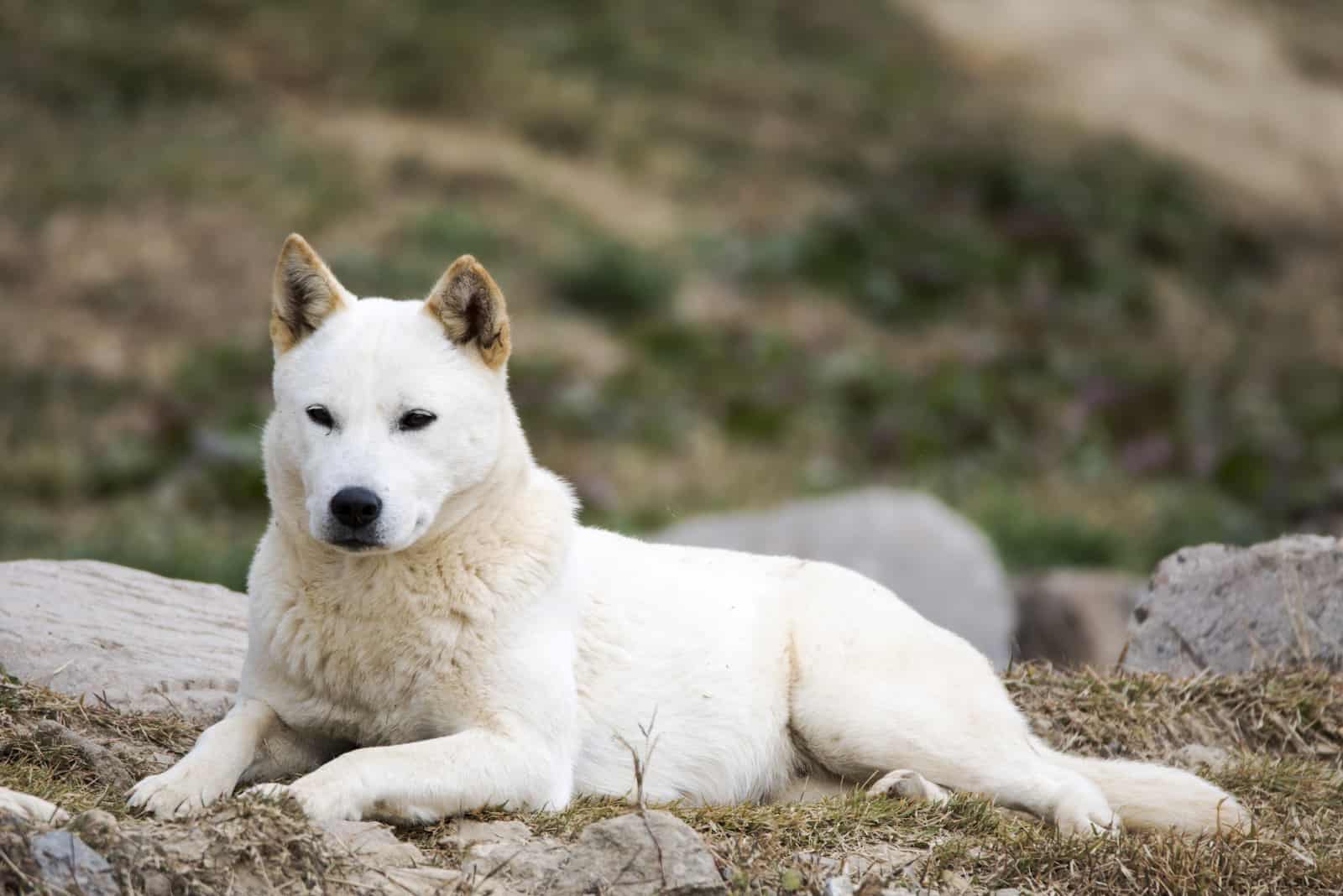
The Jindo breed is among the most loyal canines, but they’re also very intelligent, making them perfect hunters.
Of course, hunting requires high energy levels as well, which Jindo puppies have in abundance.
These dogs are very bold, but this trait is often mistaken for aggression. Jindos aren’t aggressive canines, but they will do whatever it takes to protect their owner and family members.
Loyalty and faithfulness are their ways of showing affection – they might not be so fond of strokes and cuddles.
Unlike Shibas, Jindos are silent and have a gentle nature.
However, they’re very active, so if you plan to keep your pet in a back yard, make sure it’s big enough for its needs.
Also, they’re not fond of water at all. Sprinklers and rain are out of the question while the dog is outside, so make sure to avoid your doggie getting wet when you’re out of the house.
Just keep in mind that Jindo puppies make a connection with new owners much faster than adult dogs.
Jindos generally have to be trained more than Shibas when it comes to socializing, but once this dog accepts you as a part of the family, it’ll do everything to keep you safe.
Physical traits
Jindos are often mistaken for Shibas, although there are differences between them.
First of all, Jindo dogs have more prominent ears and a more pointed face. The markings on Jindos aren’t the same as on Bushwood dogs either. Jindo dogs have creamy markings on their neck, but they don’t follow the same pattern as urajiro.
Jindo canines can be classified in two ways according to their physical characteristics:
Tonggol/Gyupgae – This type of Jindo dog has solid muscles and a sturdy body. Tonggols are very interesting because their length and height proportions measure equally.
Hudu/Heutgae – They have a slimmer body and a shallower chest.
All Jindos have high-quality double coats, just like Shibas, which protect them during the cold weather and enable them to hunt during autumn and winter as well.
Colors
The Jindo can be found in six different colors:
• Fawn – A beautiful golden color which is similar to wheat.
• Brindle – Dogs with this color are also called tigers because of the brown and dark (usually black) stripes on a fawn-colored canine.
• Black and Tan – A similar shade pattern as for Shibas. The upper part of the body is colored black, with creamy markings on the belly and around the eyes, legs, and muzzle.
• Grey – This shade is actually a combination of white, fawn, and black color, which merge into a grey-like color.
• White – This coloration includes light beige and ivory shades. They’re one of the most common shades of Jindo dogs.
• Red – This shade is also very similar to a Shibas’s red color, but the marking patterns are somewhat irregular with the Jindo breed.
Height and lifespan
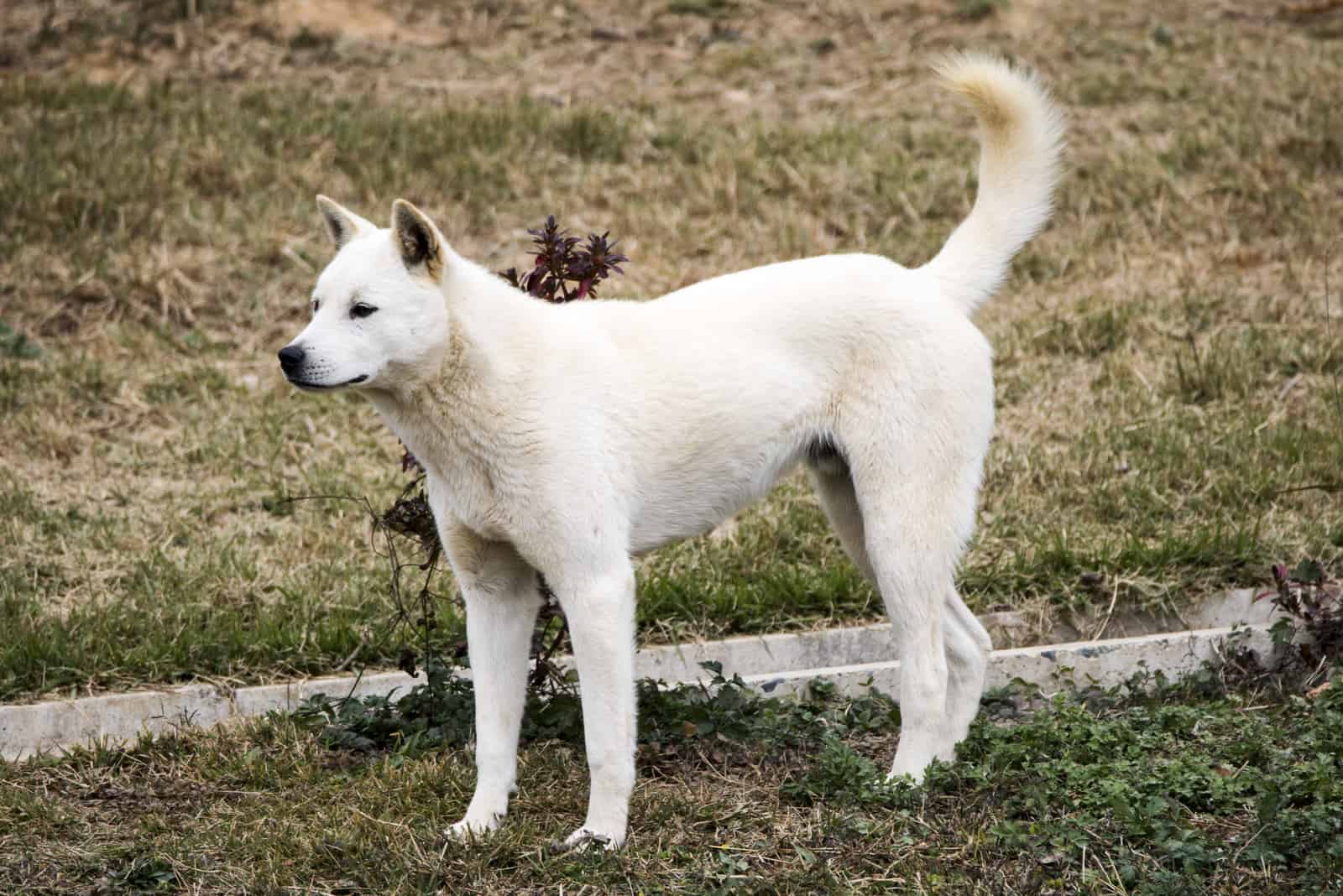
Jindos are relatively bigger than Shibas, although they share the same lifespan.
Male Jindos can grow up to 22 inches, and weigh anywhere from 40 to 50 lbs, while females grow to 20 inches, and weigh up to 40 lbs.
Health issues
Unfortunately, there are Jindo dogs that might develop one of the diseases mentioned below:
• Hip dysplasia
• Cancer
• Hypothyroidism
• Cardiovascular disease
• Pemphigus foliaceus (Autoimmune skin condition)
Most of these diseases and conditions can appear with Bushwood dogs as well. Most Jindo dogs live longer than other dog breeds, which is why they have a higher risk of getting any of the illnesses on the list.
Shiba Inu vs Jindo: The Final Verdict
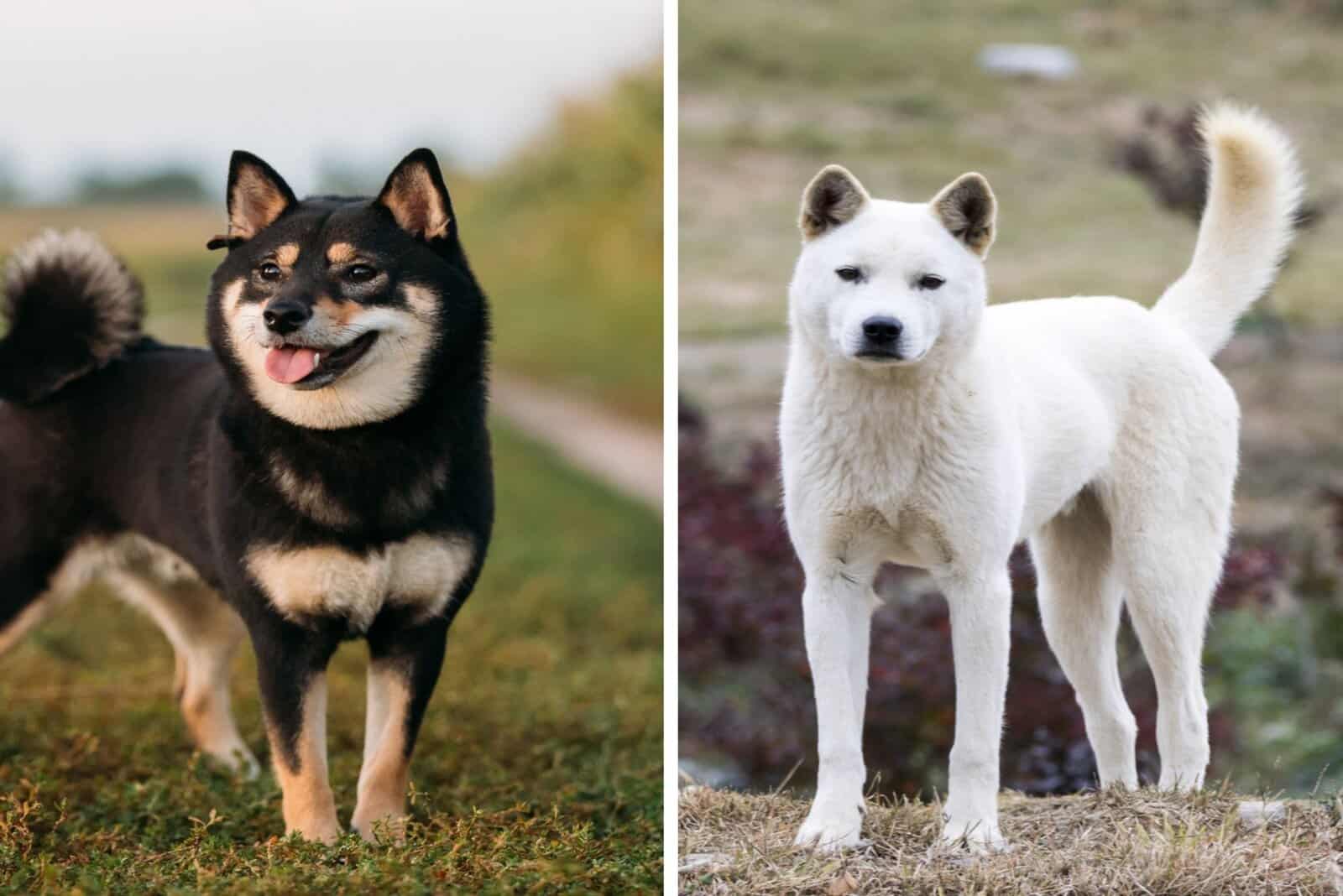
Shiba and Jindo dog breeds are very similar, especially when it comes to their physical characteristics. However, specific differences between them are worth mentioning.
First of all, Jindo dogs are taller and heavier than Shibas, which are also known as the most miniature native Japanese canines.
Both of these breeds have good hunting skills, but Jindos might have a higher prey drive and go for larger animals, such as wild boars.
The Shiba is less active than the Jindo dog, but it still requires daily activities and practice.
However, when it comes to temperament, Shibas are definitely much louder and more stubborn than Jindos.
Bushwood dogs will be loyal to their owners, but if you’re looking for the best dog for security and protection, the Jindo will always be the better option.
Shiba canines are much more popular in their country of origin and in the rest of the world. This breed was in 43rd place on the American Kennel Club’s (AKC) list of popular dog breeds in 2020.
On the other hand, there were only about twenty Jindo dogs in the USA in 2019, and I don’t believe the number has gotten any bigger by now.
None of these two breeds are hypoallergenic as they both have double coats and shed quite a lot.
Final Thoughts
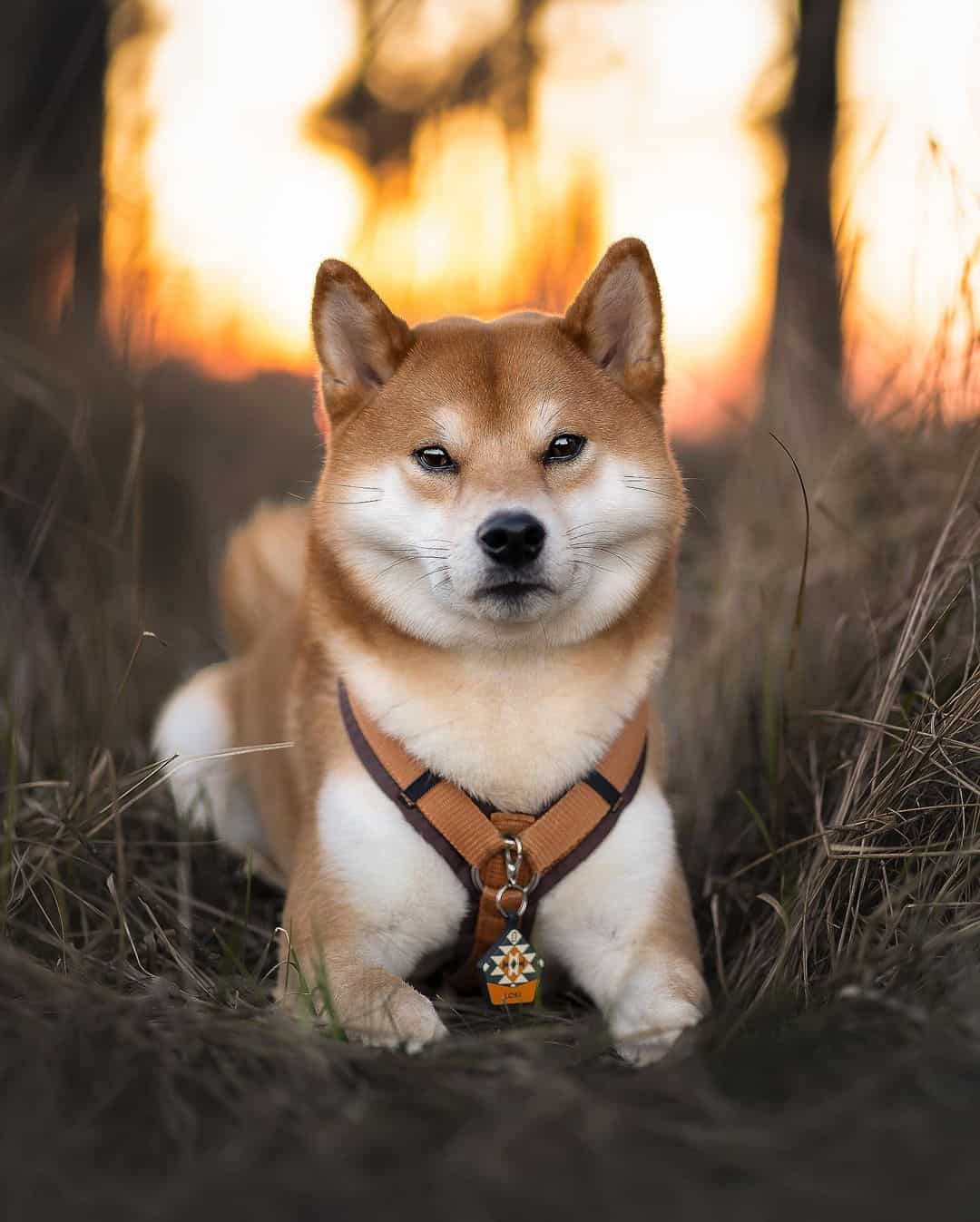
Photo from: @wolf_and_fox_stories
As you can see, both of these dog breeds have their pros and cons.
There are no winners in this “Shiba Inu vs Jindo battle,” except for you because now, you know how to distinguish a Shiba from a Jindo dog.
If you’re planning to get one of these canines as a pet, weigh out their characteristics and choose the one that fits your needs the most.
The only general downside of Jindo dogs is the process of getting one as they’re still not very popular in the U.S. However, if their popularity continues to grow, there might be a more significant number of breeders in the future!
Read Next:
• Jindo Breeders: Top 3 Places To Find A New Pet in the U.S.
• 12 Jindo Mixes You Never Heard Of
• Resolving The Akita Inu Vs Shiba Inu Mystery
